Mangoverde :: World Bird Guide :: Bee-eaters :: European Bee-eater
European Bee-eater Merops apiaster
Described by: Linnaeus (1758)
Alternate common name(s): Eurasian Bee-eater, Golden Bee-eater, Bee-eater
Old scientific name(s): None known by website authors
Photographs
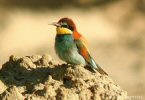
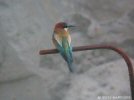
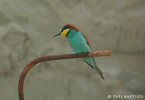
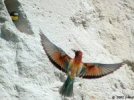
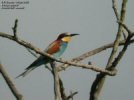
Select thumbnail to view larger image - Place cursor over image for image information
Select additional thumbnail page to view 3 more images.
Range
W. Europe and nw. Africa to c. Asia. S. Africa;
Two widely separated populations;
S. Europe in the n. Mediterranean Basin from Portugal, Spain, s. France, the Netherlands, Switzerland, Romania, Hungary and on most islands s. to North Africa in Morocco, Algeria, Tunisia and nw. Libya. Then e. through Turkey, wc. and s. Russia to the Aral Sea region, Kazakhstan, Turkestan, the Near East, Iraq, Iran, ne. Arabia, Afghanistan, w. Pakistan, n. India (Kashmir) and ex. sw. Siberia (Altai). Sporadic breeding occurs n. to n. France, Scotland, Germany, Denmark, Poland, c. Russia and probably Finland. European and Asian birds winter in Africa s. to South Africa (Cape Town). A small population occasionally breeds in Namibia and South Africa.
Winters n. in c. Africa from 15° S. n. to the Equator and w. India.
Videos
No videos are available for this species
Sounds
 Location unknown - Date unknown Source: Dutch Birding Association
Location unknown - Date unknown Source: Dutch Birding Association
 Location unknown - Date unknown Source: ETI BioInformatics
Location unknown - Date unknown Source: ETI BioInformatics
References
Clements, James F. Birds of the World: A Checklist. Vista, CA: Ibis Publishing Company, 2000.
Comments/Errors
Please email with errors/comments on this page or to donate photos.
If there is no family list to the left, you may have arrived at this page from a direct link.
Please select "Mangoverde World Bird Guide" to view the entire bird site.









